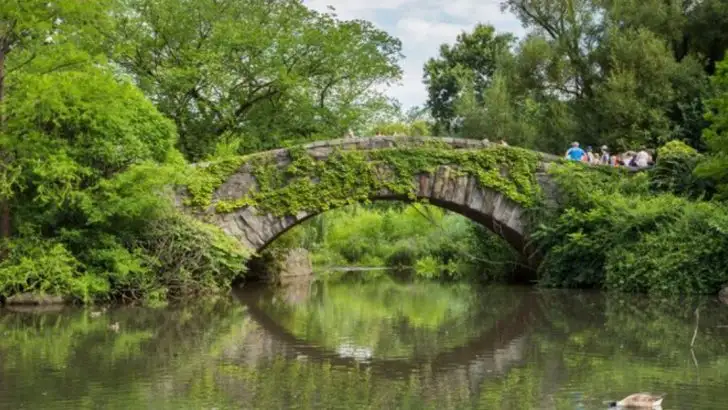America is home to some of the world’s most inspiring botanical gardens, each offering unique designs and ideas that can elevate any outdoor space. From lush landscapes to architectural features, these gardens provide endless inspiration for creating a garden that’s both beautiful and functional.
In this article, we explore 14 garden design ideas inspired by America’s most famous botanical gardens. Whether you’re drawn to the formal elegance of historic gardens or the natural beauty of contemporary landscapes, these ideas can help you bring the best of botanical design into your own backyard.
Get ready to transform your garden with innovative and time-tested ideas that have made some of the country’s gardens world-renowned.
Central Park Conservancy’s Woodland Walk
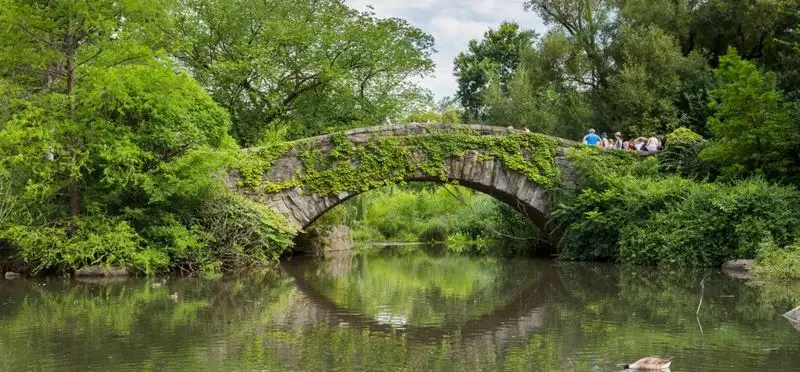
Imagine strolling through a serene woodland path, where the sounds of chirping birds blend with rustling leaves. Central Park’s Woodland Walk introduces a tranquil escape with its diverse plantings of ferns, wildflowers, and towering trees. Designed to mimic a natural forest, it offers a sanctuary within the city. This idea can be replicated in your garden by layering plants of varying heights to create depth and intrigue. Incorporate native plants for a low-maintenance approach that supports local wildlife.
Brooklyn Botanic Garden’s Cherry Esplanade
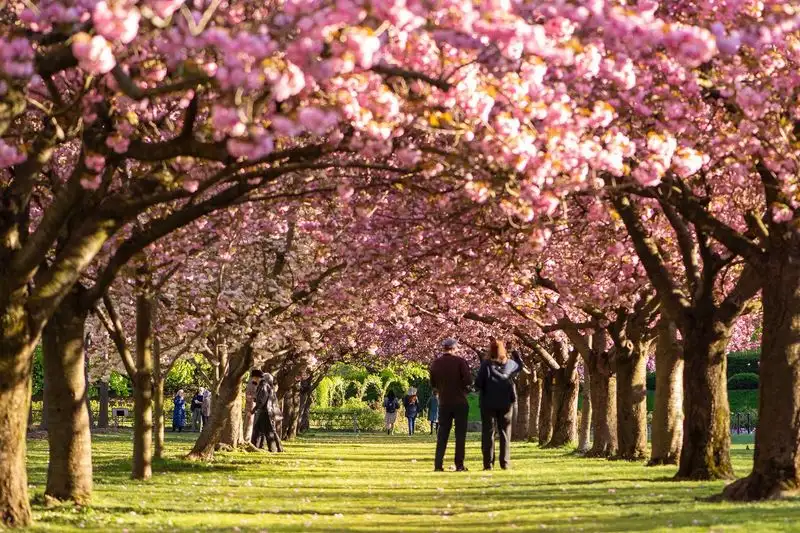
Springtime at the Brooklyn Botanic Garden is nothing short of magical, especially along the Cherry Esplanade. Here, rows of cherry trees burst into clouds of pink blossoms, offering a visual feast that attracts visitors from near and far. To capture a similar charm in your space, consider planting ornamental cherry trees or other flowering varieties. Align them along a path or driveway to recreate the enchanting tunnel effect, and underplant with bulbs for a layered bloom.
Longwood Gardens’ Italian Water Garden
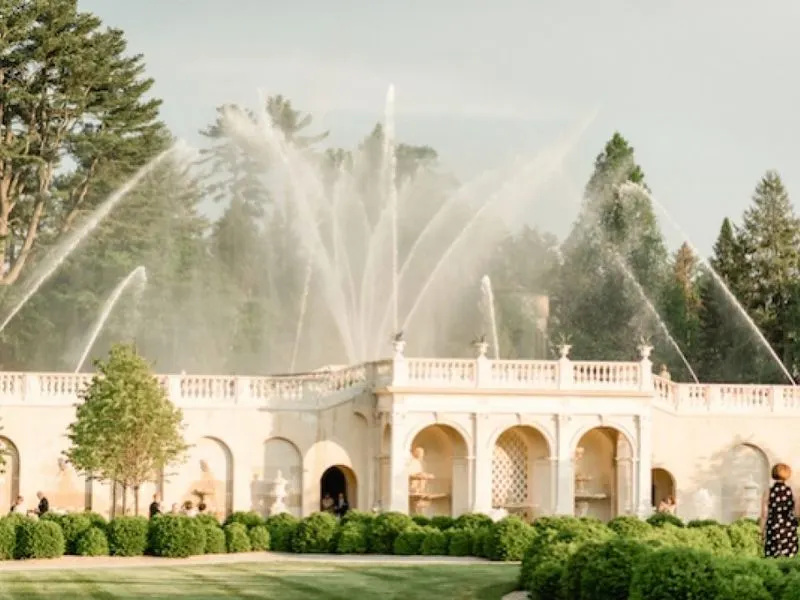
Elegance and symmetry define the Italian Water Garden at Longwood Gardens. With its cascading fountains, clipped hedges, and classical sculptures, this space elevates traditional design to an art form. Incorporating water features in your garden can add a sense of tranquility and luxury. Consider a central fountain or reflective pool to serve as a focal point, surrounded by manicured lawns and strategically placed statues for that timeless appeal.
Desert Botanical Garden’s Cactus Collection
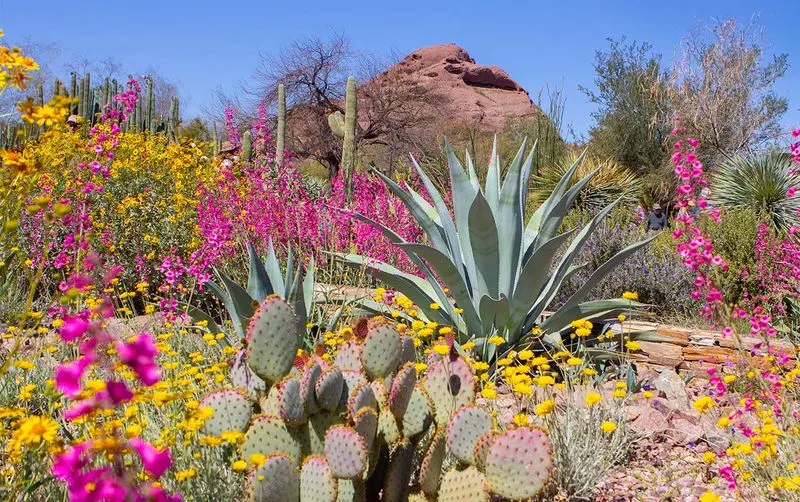
The Desert Botanical Garden showcases a breathtaking collection of cacti and succulents, perfect for those drawn to arid landscapes. This garden’s resilience highlights the beauty of xeriscaping, where minimal water usage meets architectural plant forms. Embrace drought-tolerant plants in your garden to create a sustainable and low-maintenance environment. Experiment with contrasting textures and colors, and consider gravel or stone mulch to enhance the desert theme.
Missouri Botanical Garden’s Climatron
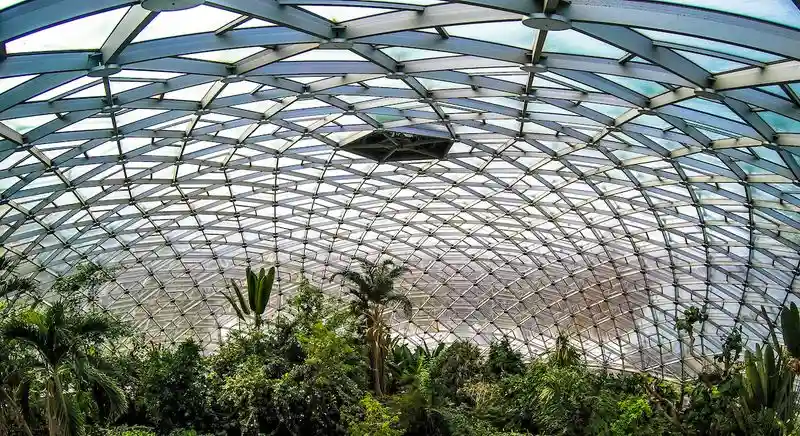
Step into a tropical paradise within the Climatron at the Missouri Botanical Garden. This geodesic dome replicates a rainforest environment, teeming with exotic plants and vibrant blooms. While recreating a full-scale rainforest might be ambitious, incorporating tropical plants in your garden can add a touch of the exotic. Consider using palms, ferns, and bromeliads to bring lush vitality to shaded areas, and use misters to maintain humidity.
Chicago Botanic Garden’s Japanese Garden
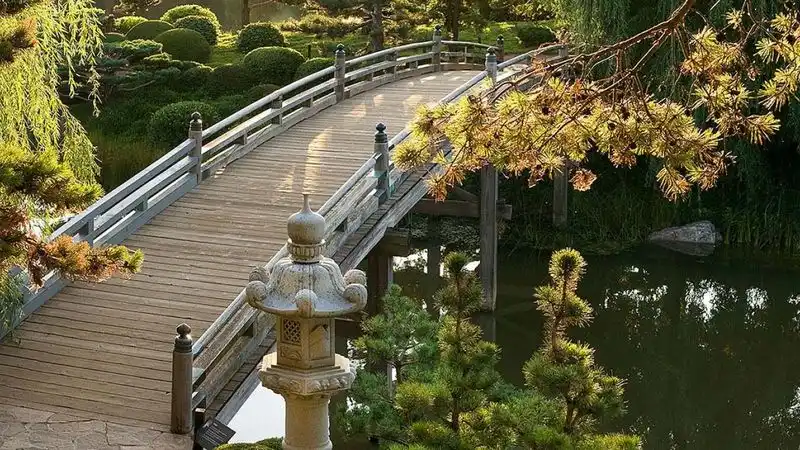
The art of minimalism shines in the Japanese Garden at the Chicago Botanic Garden. Featuring serene ponds, stone lanterns, and artfully pruned trees, it offers a meditative escape. To bring this harmony to your garden, focus on simplicity and balance. Incorporate water elements like a koi pond, and use gravel paths to guide visitors. Select plants with interesting shapes and textures, and add traditional elements like bamboo fencing.
Huntington Library’s Desert Garden

A visit to the Huntington Library’s Desert Garden reveals the stunning diversity of succulents and cacti against a backdrop of azure skies. This garden celebrates the beauty of arid environments with its striking plant forms and colors. To emulate this look, mix different types of succulents and cacti in your garden, paying attention to their unique shapes and hues. Incorporate sand or gravel for ground cover, and position rocks for naturalistic contours.
Denver Botanic Gardens’ Rock Alpine Garden
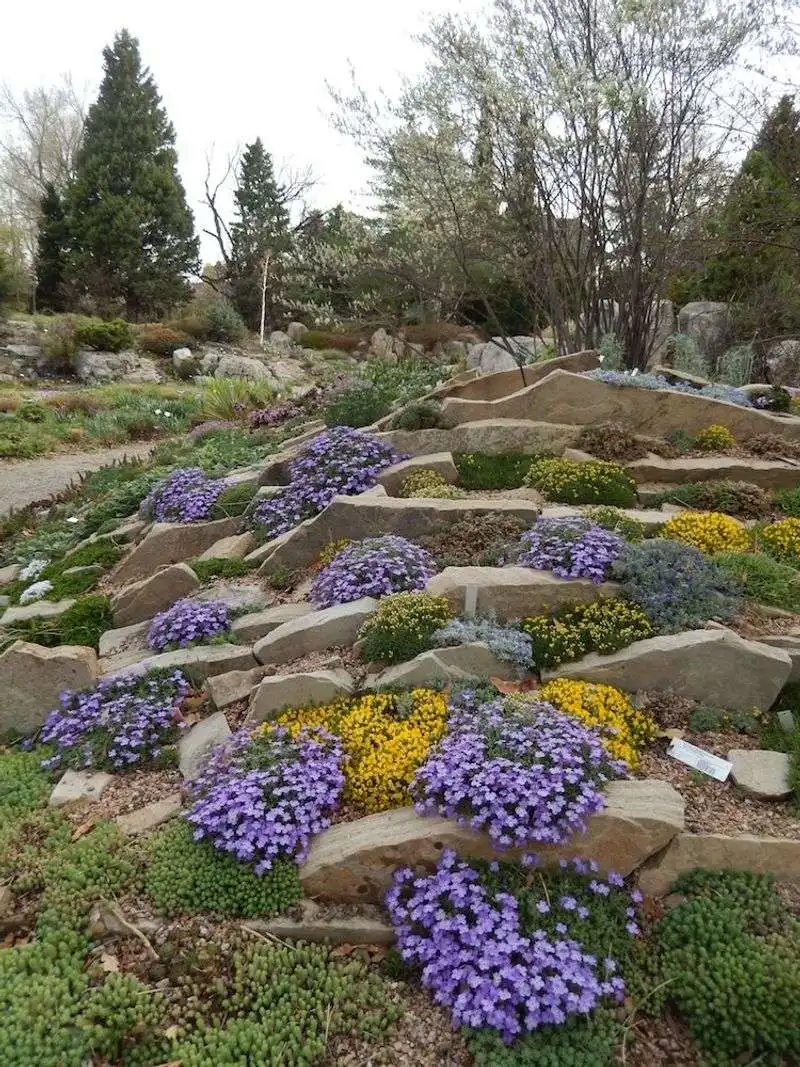
The Rock Alpine Garden at Denver Botanic Gardens transports visitors to a high-altitude landscape, where hardy alpine plants thrive among rugged rocks. This concept can be adapted for a rock garden in your backyard. Use boulders and gravel to create a naturalistic terrain and select alpine plants known for their resilience. Incorporate small water features or streams for added authenticity, and ensure good drainage to mimic mountain conditions.
Lewis Ginter Botanical Garden’s Rose Garden
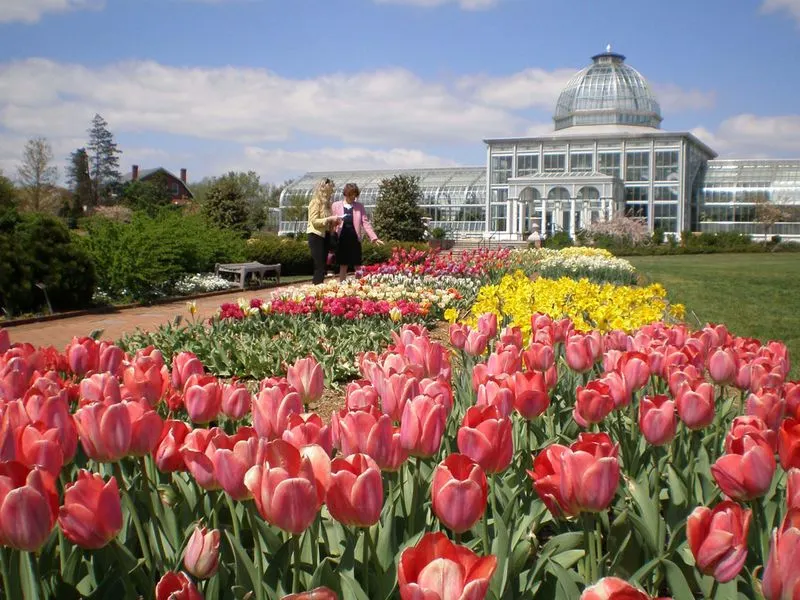
Romance and elegance blossom in the Rose Garden at Lewis Ginter Botanical Garden. With its fragrant blooms and charming archways, it invites visitors to bask in floral beauty. To recreate such charm, choose a variety of roses that suit your climate and soil conditions. Incorporate structures like trellises or archways to support climbing roses, and add seating areas for relaxation. Regular maintenance ensures your rose garden remains a fragrant haven.
Atlanta Botanical Garden’s Canopy Walk
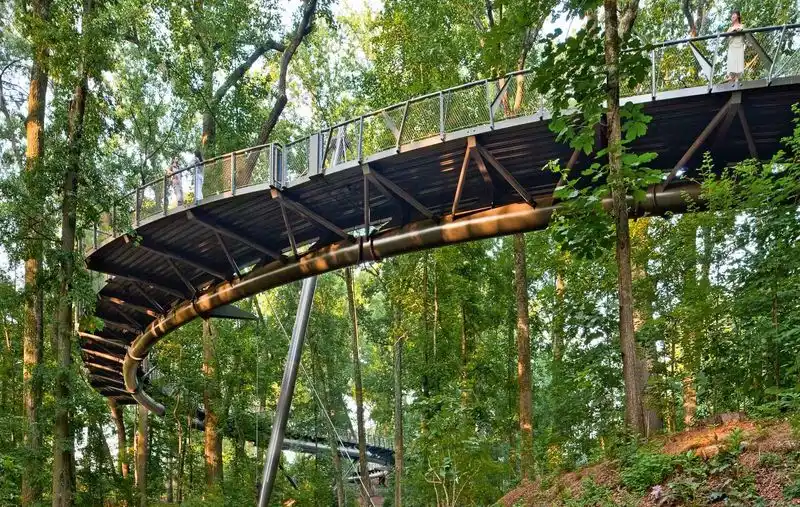
Elevate your garden experience with the Canopy Walk at Atlanta Botanical Garden, where visitors stroll among the treetops. This elevated walkway provides unique perspectives and breathtaking views. While building a full canopy walk might be challenging, creating elevated pathways or platforms in your garden can offer a new way to enjoy your space. Use sturdy materials and incorporate safety features, like railings, to ensure an enjoyable experience.
New York Botanical Garden’s Seasonal Walk
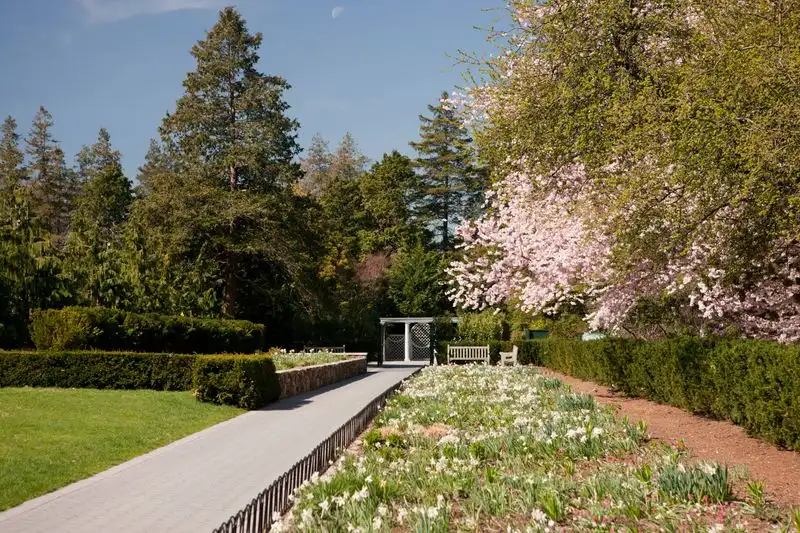
The Seasonal Walk at New York Botanical Garden celebrates nature’s ever-changing beauty with its rotating display of blooms. Designed by renowned landscape architects, it showcases a diverse array of plants that transition seamlessly through the seasons. In your garden, opt for plants with staggered bloom times to ensure year-round interest. Consider color and texture variations to create dynamic visuals, and plan for continuous maintenance to keep the display fresh.
Dallas Arboretum’s Women’s Garden
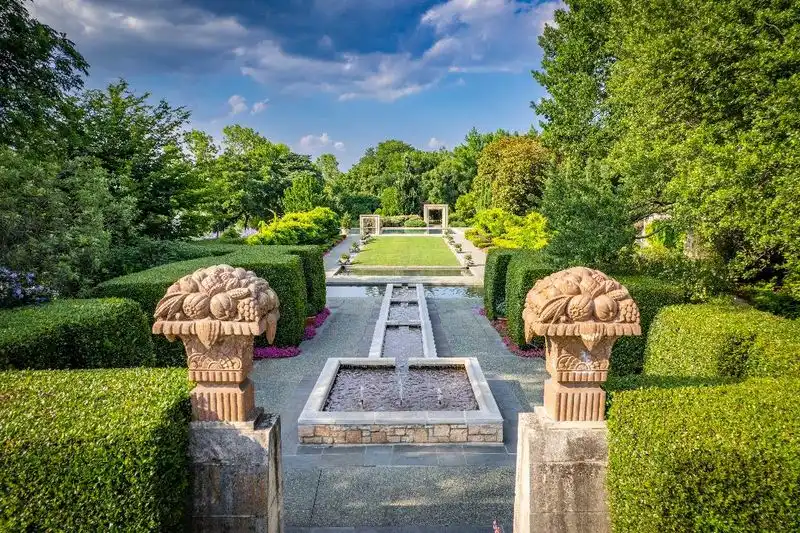
The Women’s Garden at Dallas Arboretum is a tribute to elegance and femininity, featuring beautiful water features and artful sculptures. This peaceful haven is designed to inspire and reflect. In your garden, consider including water features like fountains or ponds, paired with sculptures to add interest. Choose plants with delicate blooms and soothing colors, and arrange seating areas to encourage contemplation and relaxation.
Fairchild Tropical Botanic Garden’s Rainforest Collection
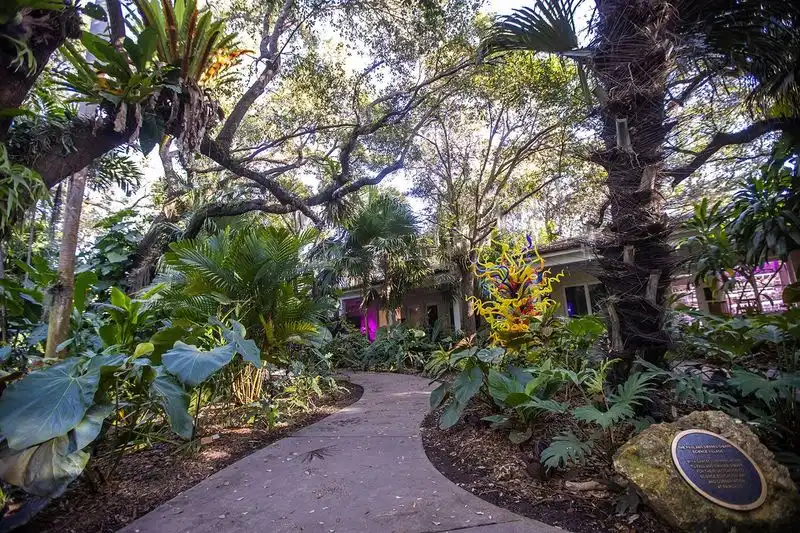
Fairchild Tropical Botanic Garden’s Rainforest Collection immerses visitors in a verdant paradise, filled with towering trees and brilliant tropical plants. This rich ecosystem is perfect for those who love lush environments. To bring a hint of the tropics to your garden, plant banana trees, hibiscus, and gingers. Create layers of greenery and use rich, organic soil to support growth. Water features and humidity are key to maintaining a thriving tropical garden.
San Francisco Botanical Garden’s Redwood Grove

Standing amidst the majestic redwoods at San Francisco Botanical Garden can be awe-inspiring. These ancient giants create an atmosphere of tranquility and grandeur. While you might not have room for full-sized redwoods, consider planting smaller tree varieties that offer vertical interest. Use shade-loving plants like ferns and hostas to create an understory. This layered approach not only replicates a forest feel but also provides a cooling effect during summer months.

